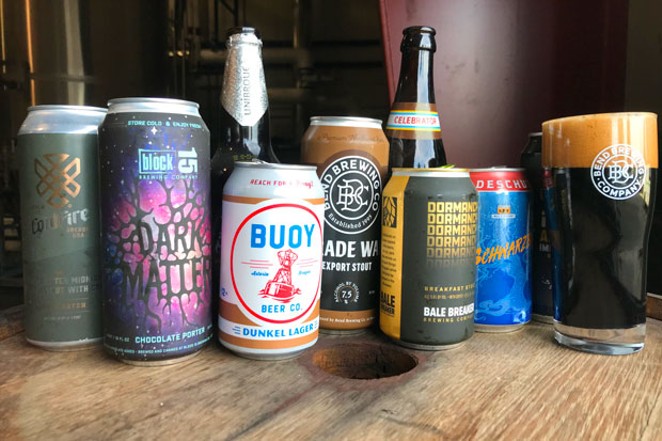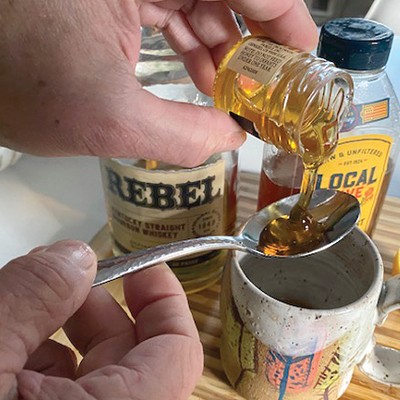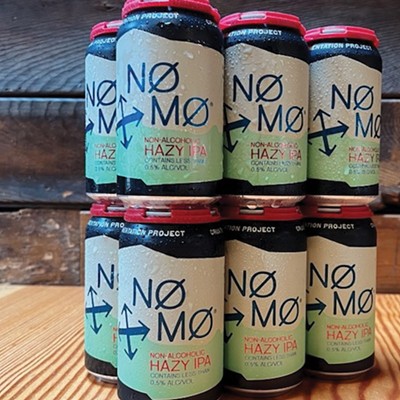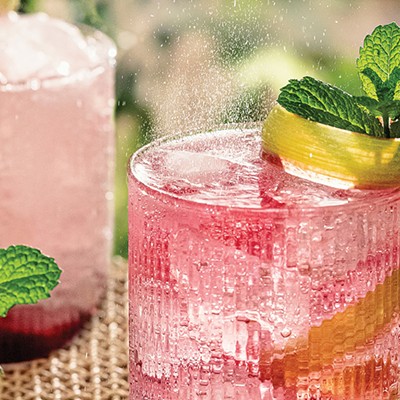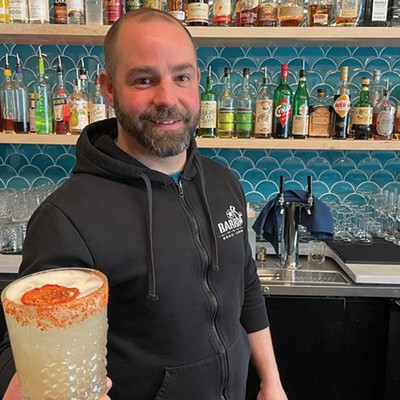"I don't like dark beer." Anyone who's ever spent enough time in a brewpub or taproom has heard those words. Of course, "dark beer" runs the gamut from hoppy Cascadian dark ales and crisp, malty dunkel lagers all the way to robust, roasty imperial stouts. Dark beer is not some monolithic beer style; dark describes appearance, not necessarily flavor. With that in mind I thought it a pertinent time to delve into the wider world of "dark beer."
You can't talk about "dark beer" without talking about stouts, and you can't talk about stouts without talking about Guinness. Arthur Guinness began brewing at the St. James's Gate brewery in Dublin in the late 18th century, brewing ales and the popular English style of porter. Early stouts were simply stronger versions of porter, so called "stout porters," but as porter's popularity waned over the 19th century, Guinness's stouts persisted. By the 1920s, when Guinness switched to unmalted, roasted barley in place of black patent malt, the styles diverged permanently. Today the inclusion of unmalted, roasted barley is the defining difference between a stout and a porter, with stouts containing a distinct roastiness and porters typically accentuating more chocolate notes.
Just as "dark beer" is not a singular entity, stout and porter each contain multiple substyles. The Guinness people are most familiar with today is not the Extra Stout that made the brewery famous; but it's nitrogenated dry stout. Dry stouts are typically a sessionable 4-5% ABV and will often include a portion of sour wort that creates a dry, slightly acidic beer that lends itself to multiple pints.
Foreign export stouts, such as Bend Brewing Company's Trade War or Pelican Brewing's Tsunami Stout, are essentially stronger and fuller-bodied dry stouts that have a distinct roasty finish. Long before so-called "pastry stouts" became the most visible "style" of stout, oatmeal stouts, featuring oatmeal in the grist, and sweet stouts, containing small amounts of milk sugar, were commonplace.
The king of all stouts is imperial stout, named because they were designed to be exported to the Russian Imperial Court. Imperial stouts are what people imagine all dark beers to be; strong, thick and onyx black. Barrel aging imperial stouts in bourbon barrels has become standard for most breweries, with some releases, such as Crux's Tough Love and Deschutes Brewery's Abyss, becoming annual holidays. Porters similarly range from nutty and chocolatey brown porters to increasingly more robust and imperial-strength versions.
Beyond the porters and stouts that everyone associates with "dark beer" are the multitude of dark lager styles. Dark lager styles range from German dunkel lagers such as Buoy Beer's recently canned Dunkel Lager, to taqueria-favorite Mexican dark lagers all the way to strong, lagered Baltic porters. Dark lagers, like dark ales, can be crisp and sessionable or strong and decadent and everywhere in between.
Even hop heads can find a dark beer to suit their needs. Cascadian dark ales or black IPAs, to those outside the Northwest, are essentially classic IPAs that have been "stained" with debittered black malts to create a mind-bending mix of intense hop flavor crossed with a stout-like appearance. The style is much maligned, but well-executed versions are a treat.
As the beer world drifts further and further away from beer-flavored beers and classic styles are increasingly ignored, "dark beers" provide an important reminder of the incredible depth of flavor and experience that the world of beer offers. Don't be afraid of the dark.

